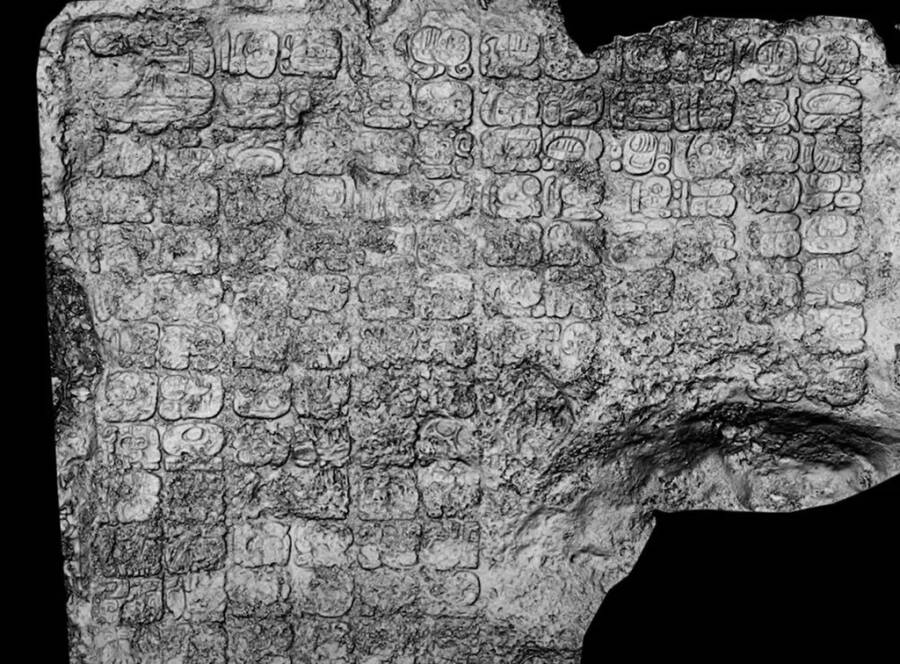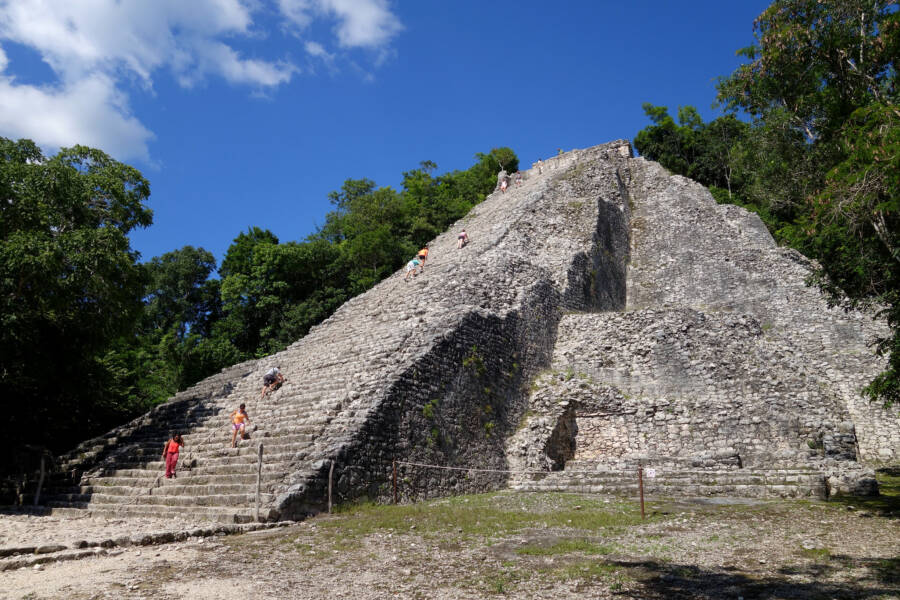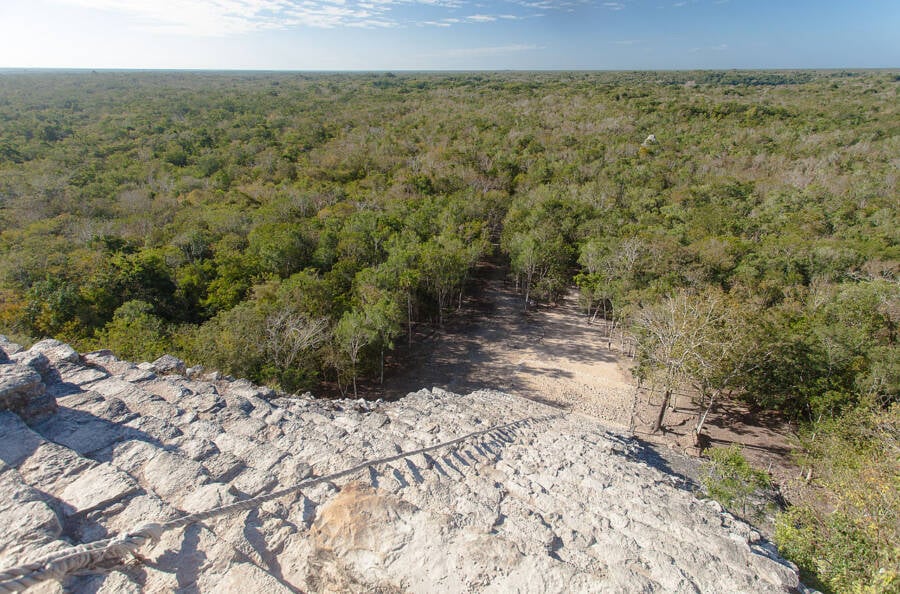Discovered in a sacred pool near the Nohoch Mul pyramid, the stone tablet contains information about the founding of a town and a Maya king named K'awiil Ch'ak Chéen.

National Institute of Anthropology and HistoryThe stone tablet is made up of 123 hieroglyphic cartouches.
Nohoch Mul, the tallest Maya pyramid on the Yucatan Peninsula, has long drawn interest from researchers and tourists alike. Visitors trek up its 120 steps, while archaeologists study the area around it. It was during one of these studies that archaeologists recently made a stunning find: Engraved directly onto the stone floor of what was once a sacred pool was a Maya panel covered in hieroglyphic text.
The tablet, a thrilling discovery to emerge from the Archaeological Zone of Cobá, even contains the name of a previously unknown Maya king.
The Stone Carving Found Near Nohoch Mul

Paul Simpson/FlickrThe stone carving was found near Nohoch Mul, the tallest Maya pyramid on the Yucatan Peninsula.
According to a statement from the National Institute of Anthropology and History (INAH), the carving was discovered 525 feet from Nohoch Mul, on the stone causeway of a sacred pool.
“[The] panel [is] composed of 123 hieroglyphic cartridges, in an extensive L-shaped inscription, just over 11 square meters [36 square feet], sculpted directly on the rock,” the INAH statement explains.
A preliminary epigraphic study determined that the stone carving contained information about the foundation of a Maya town called Keh Witz Nal, or “Deer Mountain,” on May 12, 569 C.E. It also contained the name of a previously unknown Maya king: K’awiil Ch’ak Chéen.
The king is “a character identified for the first time,” according to the INAH statement, and fills “a gap in the dynastic sequence of Cobá.”
How The Stone Carving Illuminates The History Of The Archaeological Zone of Cobá

Greg Willis/Wikimedia CommonsThe view from the top of Nohoch Mul.
The discovery of the stone panel is significant because it sheds light on the city-state of Cobá, or the “City of Choppy Water,” whose history lasted roughly 1,300 years (100 B.C.E. to 1200 C.E.). Fourteen rulers of Cobá have been identified so far, three of whom were women (one reigned for four decades).
As INAH explains, the new king’s name “allows us to corroborate that many of the rulers of this city-state… adopted the name of the god K’awiil, which gave them their attributes as protective deities of the place.”
The hieroglyphs on the rock panel also link “events from historical times with the mythical past.” The glyphs seem to make allusions to “a group of tutelary gods who founded Cobá, such as Bolón Tz’akab Ajaw, ‘Lord of countless generations,’ in charge of the foundations of the corn and cocoa dynasties.”
The statement notes that archaeologists have carefully cleaned the carving to remove the soil, salts, and weeds that covered it, and injected the stone with lime mortar fillings “to give internal strength to the rock” which has cavities caused by centuries of rainfall. Archaeologists also made a “high-precision record of the glyphic text” in order to create 3-D models which can be used to fully decipher the hieroglyphic carvings.
The stone tablet may yet reveal more Maya secrets as archaeologists study its glyphs in more detail. But for now, it stands as a stunning discovery full of information about a lost king, a lost town, and a lost way of life.
After reading about the Maya stone tablet that contained the name of a previously unknown king, discover the story of El Castillo, the largest pyramid of the Maya city of Chichén Itzá. Or, learn the chilling story of Camazotz, the Maya god known as the “Death Bat.”





